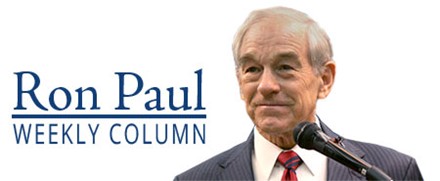Fed Runs Repo Operations; Is It Baby-Stepping Toward QE?
by Peter Schiff, Schiff Gold:

In a move “Bond King” Jeffrey Gundlach said could be a prelude to the next round of quantitative easing, the New York Fed conducted a repurchase operation involving about $53 billion in debt instruments on Tuesday. The move to designed to unplug the financial system’s “plumbing” with an injection of cash was the first such move since the financial crisis a decade ago.
The purchases involved about $40.8 billion of Treasurys, $11.7 billion in mortgage-backed securities and $600 million in agency debt, according to a CNBC report. The move was prompted by the recent surge in interest rates that drove the overnight repo rate Monday to as high as 8.5%.
The New York Fed was expected to repeat the operation on Wednesday.
This follows on the heels of what Peter Schiff called a very violent move in the bond market last week and prices tanked and yields surged.
Repurchase operations are an important aspect of the banking system. The repo market enables banks to borrow cash in order to maintain liquidity and meet daily needs. In a repo trade, banks and other firms use Treasurys and other “high quality” securities as collateral for short-term loans. The bank then repurchases the bonds paying a nominal rate of interest – usually within 24 hours.
Interest rates on repo deals typically hover in the same ballpark as the Federal Reserve’s benchmark rate – currently set at 2-2.25%. But when investors become wary of lending for whatever reason, or if cash reserves fall, that interest rate can skyrocket. As Reuters described, this can lead to a number of significant problems in the financial markets.
Trading in stocks and bonds can become difficult. It can also pinch lending to businesses and consumers and, if the disruption is prolonged, it can become a drag on a US economy that relies heavily on the flow of credit.”
On Monday, available cash essentially evaporated, prompting the Fed to step in and conduct repo operations in order to inject cash into the system. Peter Schiff succinctly explained what happened in a pair of tweets.
The financial media and Wall Street are downplaying the significance of the NY Fed’s emergency injection of 53B into the banking system to prevent interest rates from rising. The Fed can’t suppress rates forever, and the longer it does, the greater the crisis when it gives up! … Market forces were pushing interest rates up to attract funds. The Fed intervened by creating money out of thin air to artificially suppress them.”
So, what caused the problem? Reuters pinpointed two coincidental events.
First, corporations had to withdraw funds from money market accounts to pay for quarterly tax bills, and then on the same day the banks and investors who bought the $78 billion of US Treasury notes and bonds sold by Uncle Sam last week had to settle up.”
But there is also an underlying systemic problem. According to Reuters, cash reserves that banks park with the Fed and are often made available to other banks on an overnight basis are at their lowest since 2011. This is the result of the Fed’s recent balance sheet reduction.
In other words, what we saw early this week was a tremor caused by the Federal Reserve’s quantitative tightening.
In the wake of the 2008 crash, the Fed bought more than $3.5 trillion in bonds and banks built up massive cash reserves at the Fed. That level peaked at around $2.8 trillion and began to drop in 2015 when the Fed started raising interest rates. The decline in reserves accelerated when the central bank began its balance sheet reduction operation. According to Reuters, “bank reserves at the Fed last stood at $1.47 trillion, the lowest level since 2011 and nearly 50% below their peak from five years ago.”
Loading...



